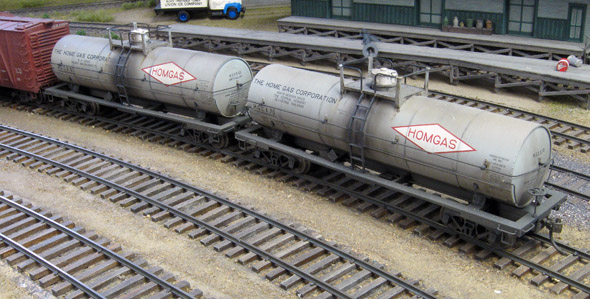 |
| An early morning view of the CNR London, Ont. yard on February 27, 1994. The south yard seen to the right if full. |
A Cold February Morning
During the time this photo was taken I was working on the engineman's spare board. On this particular morning, Feb. 27, 1994 I was called for the regularly run Sunday morning extra yard. I arrived early and had crossed the Highbury Ave. overpass were I could check the yard on my way to work. If the yard is full I knew we were in for a long day. On this day it was full. I noted the fresh snow and the alignment of the engines and caboose in the south yard. I did have my camera with me and thought it would make a nice view. I decided to go part way up the bridge and record this view. The small engine seen to the left is the yard engine we would use to switch the yard. Our yard office is to the left of that. One can see two leads. The five tracks full of cars to the right is the south yard. The empty tracks right of the south yard are the two main lines.The south yard was were trains would be yarded and switched in most cases although the two tracks to the left of the south yard are the longest and are also used for arriving trains. In the photo we are looking west. One can see three westbound trains are stored waiting switching. Two of these would be road switchers trains that had arrived through the night.The road power seen is on an Eastbound train which would be ready to go once the crew is ordered. Our crew would have to ready all the Toronto bound cars before it could be ordered. Those days are now long gone as one never sees a caboose in London yard and there is only one through train and a few road switchers working out of London....George Dutka
















































